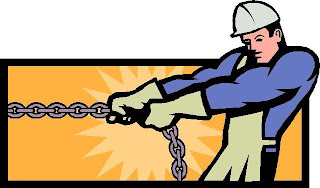Number 32 on the list is from me (George Torok). It's the shortest tip on the list and perhaps the most practical and effective, (in my opinion - you decide).
32. Write the Magic Words
Some of the other tips that stand out are:
1. Karma Pays
Two
words: help people. Be it via written content, through social media, at
local networking events - whatever opportunity you have to help your
target consumer base, take it - and put your all into it. People want to
help good people. You'd be surprised how much "free" word of mouth you
can get your business simply by showing you're the kind of person who
helps others without any strings attached. It's certainly worked for me.
Karma- it pays.
5. On a Budget? Be Controversial!
When
I say 'controversial' I mean say something unexpected to get people to
talk. Take the government shut down. In a sea of "Democrats are wrong!"
and "Republicans are wrong!" suddenly your message is, "Here's why the
shutdown is great!". It instantly stands out and provokes discussion,
passes on links, possible media queries and so on, all for free. Of
course, make sure that you can back up your claims and that they match
your business model. It's amazing marketing on a budget, and one I
always use.
Thanks to: David Weber of Learn About Flow.
13. Tell a Story in Six Seconds
As
a bootstrapping startup in the legal field, it has been both
challenging and exciting to come up with scrappy marketing techniques.
One of the best pieces of advice for marketing on a budget I've seen is
using Vine for a Q & A session.
Gary Vaynerchuk said it best, "Time is our biggest asset. What Vine does, is it gives you a promise that this is only six seconds of your time."
Find a creative way to tell a story to your market in six seconds.
Gary Vaynerchuk said it best, "Time is our biggest asset. What Vine does, is it gives you a promise that this is only six seconds of your time."
Find a creative way to tell a story to your market in six seconds.
Thanks to: Janine Holsinger of NextChapter.
23. Videos Grab Attention
YouTube
is the second most searched site on the internet. Create a promo-video
yourself on the cheap by using MS Movie Maker or go to fiverr.com and
get a video produced for only $5-$20 depending on length and quality.
The promo video can then be placed on your website. QR codes (done for free) can drive people to your video and you can use the video for social campaigns - then, get it transcribed and pdf'd, cut out the voice/music for a podcast. Leverage one video into multi-usable content.
The promo video can then be placed on your website. QR codes (done for free) can drive people to your video and you can use the video for social campaigns - then, get it transcribed and pdf'd, cut out the voice/music for a podcast. Leverage one video into multi-usable content.
Thanks to: Curtis Chappell of Quantum SEO Solutions.
If you like these and want to read more visit The Best Marketing Advice
George Torok Keynote Marketing Speaker Co-author of Secrets of Power Marketing Get your free copy of "50 Power Marketing Ideas" Power Marketing on FaceBook Marketing Zoo on Twitter












